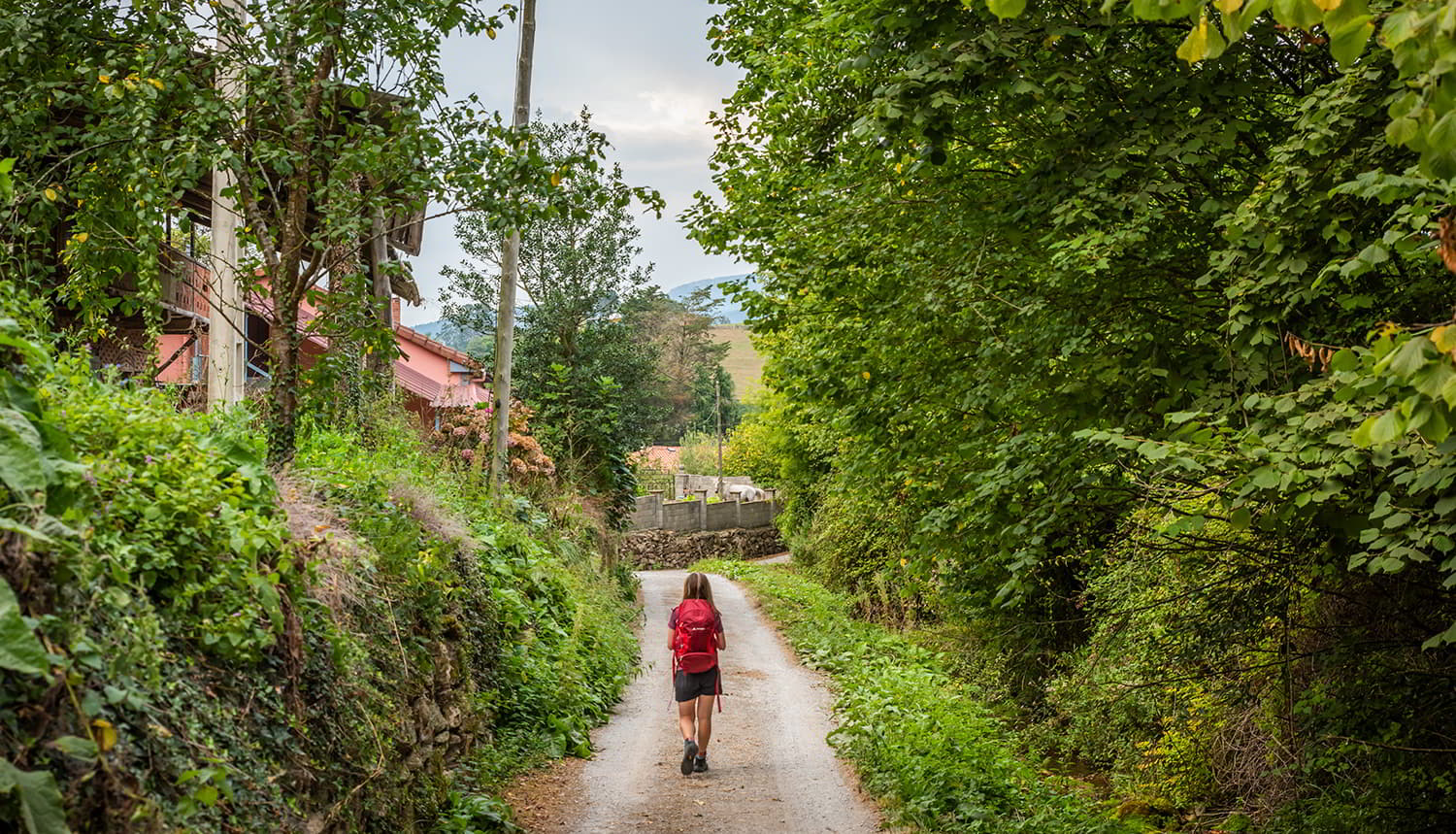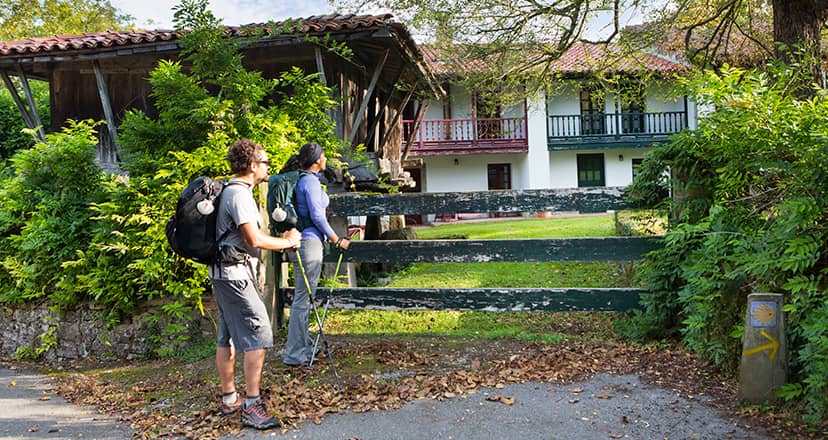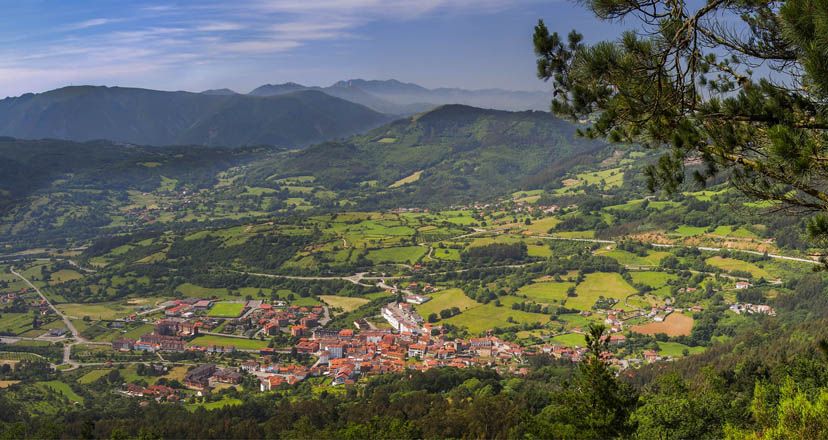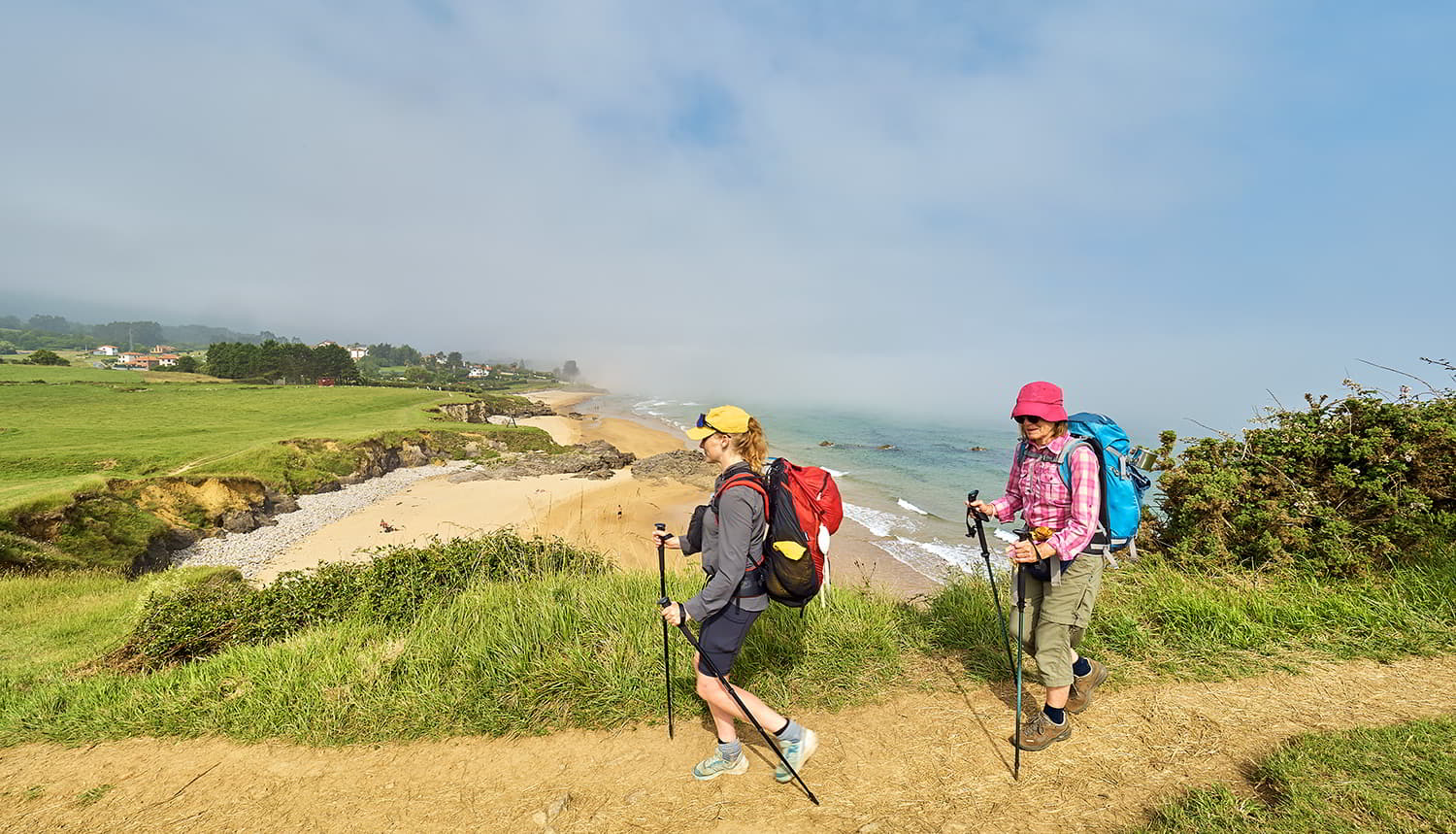Back Oviedo, the first capital of the Way of St. James
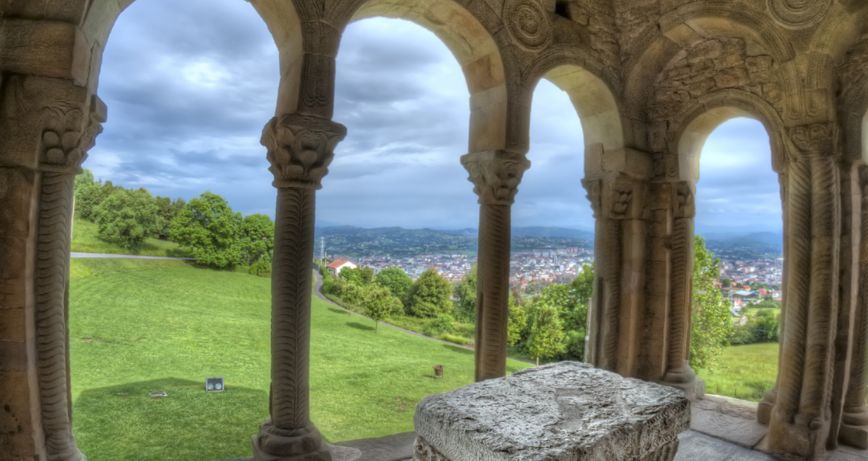
Oviedo, the city of origin of the Way of Saint James
Oviedo, capital of Asturias, is also the "kilometre zero" of a unique spiritual route in the world: The Way of St. James.
Oviedo/Uviéu holds the honour and value of being the origin, the starting point, or as it is often said in a colloquial tone, the "kilometre zero" of a route of spirituality, the Camino de Santiago, which has marked the history of the world, and which today more than ever, after more than a thousand years, attracts thousands and thousands of pilgrims.
It cannot be said that all the routes were born in Oviedo/Uviéu, but it can be said that all the routes that today lead to Santiago de Compostela started in the Asturian capital. At the gates of the cathedral, a plaque reminds us that King Alfonso II set out from the same place, at the dawn of the 9th century, on what is considered to be the first pilgrimage to Compostela. It is a milestone that is well known and has been dealt with in a large number of historiographical studies, but which, for various reasons, had not become part of the city's collective subconscious until very recently. The declaration of the route followed by that remote Asturian monarch, the so-called Primitive Way, as a World Heritage Site by Unesco has meant that Oviedo/Uviéu is currently experiencing a joyful reunion with its status as the starting point of the Pilgrim's Way.
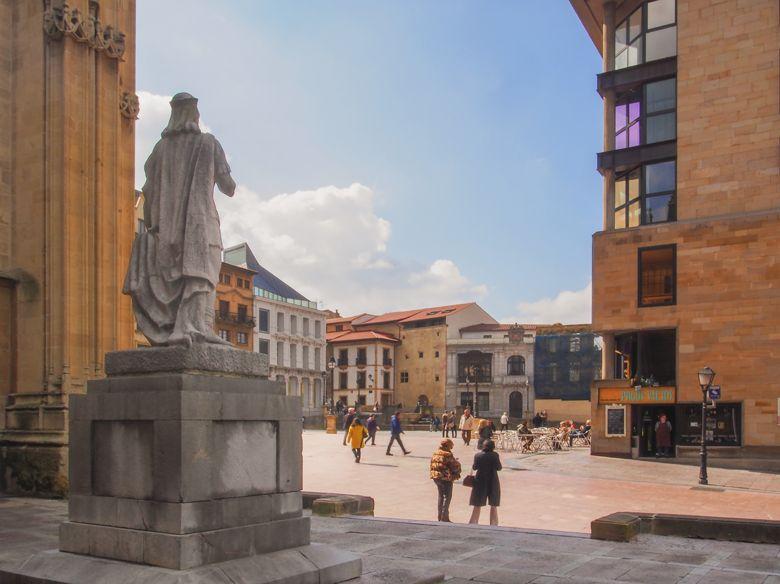
A distant and topical story
The story - or the legend, because both merge and intertwine to form a labyrinth in which it is not always easy to find a way out - began when a hermit named Paio discovered a tomb in the forest of Libredón, in deep Gallaecia, which the bishop Teodomiro, prelate of Iria Flavia, identified as belonging to the apostle St. James. When the news was communicated to the court, which was then in Oviedo/Uviéu, the king wanted to go there to see the discovery with his own eyes. There is no record of the specific itinerary, but logic dictates that he had to travel along the Roman road that connected Lucus Asturum (Lugo de Llanera) with Lucus Augusti (Lugo) and that once there he had to take the road that led to Bracara Augusta (Braga), passing through Iria Flavia (Padrón). What is recorded is that he ordered a church to be built over the apostolic remains and that, after his death, testimonies began to appear from travellers who had decided to follow in his footsteps on what was the first of the many Pilgrims' Routes to Santiago that would be laid out over the following centuries.

It was precisely the use of these less arduous routes, as they ran through much more accessible territories, and especially the boom experienced since the 13th century by the so-called French Way, which meant that the Primitive Way was gradually relegated in the preferences of walkers. Also in the memory of the territories through which its route passed. Although from time to time some pilgrims were encouraged to undertake the adventure on their own, it can be said that Asturias turned its back on a tradition that, strangely enough, began to be alien to them.
A Lord called Saint Saviour

Things have changed and both the city and the autonomous community have begun to believe in their involvement in the Jacobean phenomenon. The evidence, on the other hand, has never ceased to be there. In Oviedo/Uviéu the cathedral of El Salvador has always stood, with the beautiful Holy Chamber in whose apostolate many see the hand of a disciple of the master Mateo, and the people of Oviedo have always been fond of the saying that "he who goes to Santiago and does not go to the Saviour, visits the servant and leaves the Lord". In fact, the basilica houses a superb Romanesque image of the Saviour which is considered iconic and which continues to welcome, so many centuries later, the pilgrims who set out on the route to Compostela at its feet. This is not the only attraction of a temple which, apart from its religious importance, treasures within its walls multiple traces that allow us to retrace the history of Asturias through the scrutiny of its stones. In the Chapel of the Chaste King, for example, is the Royal Pantheon that once gave meaning to the disappeared pre-Romanesque church of Santa María, and there stands out the early Christian sarcophagus of a certain Itatius of whom we only know that he died at an early age. The splendid crypt of Santa Leocadia, the evocative pilgrims' cemetery or the majestic chapter house - without forgetting the magnificent Gothic tower, which Clarín described at the beginning of La Regenta with words as memorable as they are audacious - are other elements that give a particular identity to this point where the Primitive Way begins its adventure.

Oviedo, a city where the Jacobean spirit is in the air
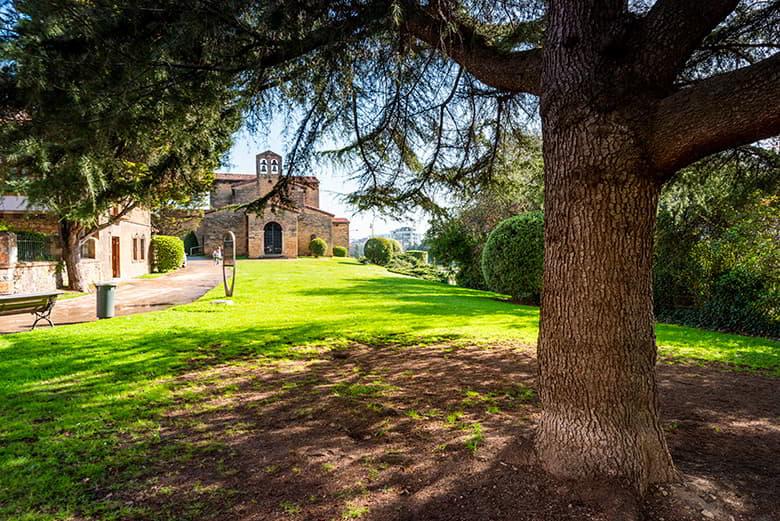
But it is not advisable to start immediately, because to understand things you have to pay attention to the time and place in which they originate, and a delayed tour of Oviedo/Uviéu still allows us to hear from time to time the echoes of Asturias taking shape as an independent political reality in an Iberian peninsula dominated by Islam and sending ambassadors to the court of Charlemagne at the same time as it sketched the first design of what would eventually become the "main street of Europe", to use Goethe's fortunate definition. The beautiful church of San Julián de los Prados - it is almost miraculous that it has survived to the present day - is perhaps the best example of the vocation and sense of State of that Alfonso II who wanted to found in this northern enclave a new Toledo from which to recover the lost splendour of Christianity. A few kilometres away, on the slopes of Naranco, the palace of Santa María and the church of San Miguel bear witness to the greatest splendour that the always surprising Asturian art could have known. The Foncalada fountain, the palace of La Rúa or the temple of the Dominicans, which appear as you walk steadily through the city centre, conserve the mark of a medieval Oviedo/Uviéu whose traces can be completed in the rooms of the Archaeological Museum of Asturias, located in the old rooms of the monastery of San Vicente whose windows were opened by Father Feijoo so that the light of the Enlightenment could enter through them.

A Legacy for Humanity
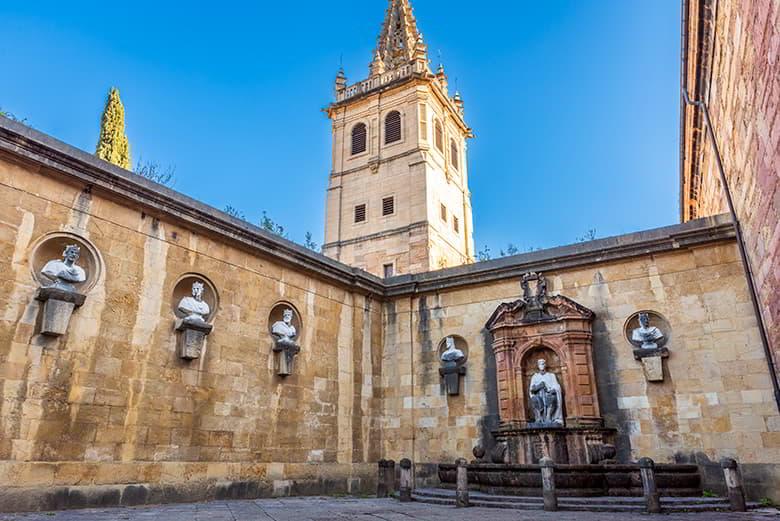
Oviedo/Uviéu, which for a long time lived and enjoyed all this legacy in silence, as if it did not dare to air and spread its past glories, is somewhat perplexed by the growing presence of pilgrims in its streets. It is not an isolated fact: all the towns scattered along the Primitive Way speak of a boom that is far from having reached its peak, although no one wants to run the risk of overexploitation. The most experienced walkers explain that this unexpected success is due, firstly, to the beauty of the route and, secondly, to the fact that of all the historic Jacobean routes, it is the only one that can be covered in its entirety (from beginning to end, from alpha to omega) in approximately fifteen days. There is a third reason: the unspoilt nature of the landscape and of the pilgrimage itself, much less crowded than others and, therefore, far removed from the excesses of tourism. Some say that the great virtue of the Primitive Way lies in maintaining almost intact what must have been the original spirit of the first walks to the tomb of Compostela. Those that had in Oviedo/Uviéu their kilometre zero and ended up forming one of the great cultural phenomena of Western Europe.
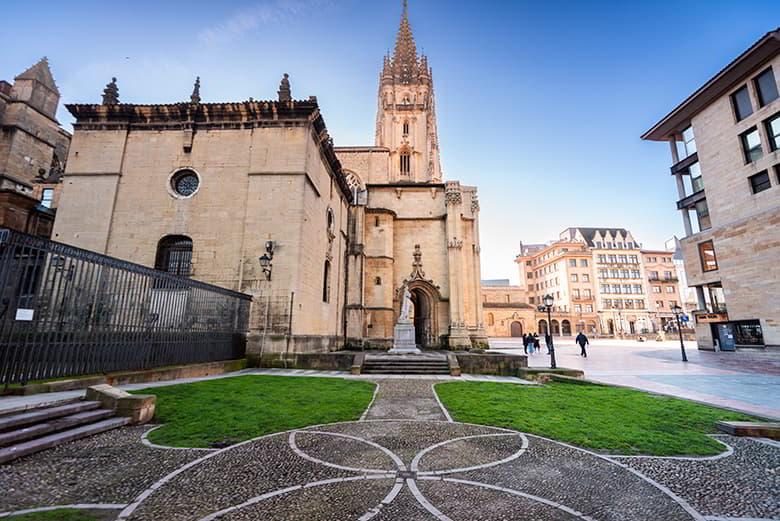

Subscribe to our newsletter and take advantage of offers, discounts, and news
Subscribe

